A new year, a new start. Like most people, I have been completely stay-at-home for two years now, although I will admit to feeling lucky that my home includes seven acres of gardens and backs onto a quarter million acres of forest and mountains, so nature has been my salvation and my saving grace. And because I am not traveling or eating out or shopping at all, I somehow managed to justify expanding the library substantially this past year. I have had more time for studying and have enjoyed exploring the chemistry, the actions and the energetics of herbs through several interesting writers. Here is a brief survey of the new books on the shelf.
Functional Herbal Therapy: A Modern Paradigm for Clinicians
by Kerry Bone, 2021 Aeon Books, UK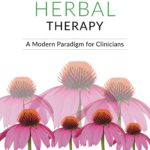
This is the textbook we all wanted to have in herbal medicine school. In his singular erudite style, Kerry has explained the most complex herbal pathways and actions in plain English, and in many cases, in clear and easy to comprehend tables, charts and diagrams. With differential diagnosis and differential prescribing explained at a cellular level, this is a book by a clinical practitioner for clinical practitioners, and for anyone who wants to understand how herbs work, so that botanical prescribing is based on expected and specific chemical responses. In clear and concise language, he explains the science behind herbal formulating and how to adjust and adapt protocols to suit each patient. In addition, there is a whole chapter written by Simon Mills on the traditional roots of functional herbal therapy and how it is practiced in other countries and cultures and the history of western herbal medicine. This is a reference book that is destined to become a classic.
Energetic Herbalism: A Guide to Sacred Plant Traditions Integrating Elements of Vitalism, Ayurveda and Chinese Medicine
by Kat Maier, 2021 Chelsea Green Publishing, USA 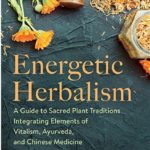
This book is beautiful, practical and inspiring on so many levels. With gorgeous illustrations and filled with recipes and formulas, this book offers something for everyone. There is a big focus on appreciating herbs for themselves, as themselves. Descriptions of sitting and listening to the plants, discussions of flavours and their energetic effects, of the qualities and metaphysics of the plant metabolites, and with due regard to place, season and the traditions of the indigenous peoples. There are clear and insightful descriptions of health and disease through an energetic lens, detailed descriptions of temperaments and tissue states, and an extensive materia medica based on Kat’s long years as a herbalist. An important point that Kat discusses is sustainability and harvesting issues for herbal medicine – a conversation we need to be having more.
Textbook Of Naturopathic Oncology: A Desktop Guide of Integrative Cancer Care 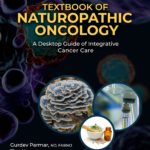
by Gurdey Parmer and Tina Kaczor, 2020, Medicatrix Holdings, Canada
Another new book that is already well worn on my shelf; in fact, it hasn’t even made it to the shelf. It’s been resident on my desk for ready access ever since I received it in the mail. This book is written by medical specialists, doctors and naturopathic oncologists, all of them with practical clinical experience of integrative oncology. This is not a book for a patient to be reading and trying to understand how to manage their own cancer care, but it certainly is a book that any clinician or health care professional would want to have if they do see cancer patients in their practice. Beginning with a detailed description of the process and progression of cancer, how it starts and how it grows, the book then goes into a whole chapter on specialized diets for cancer, integrating natural care with conventional treatments, managing the side effects of chemotherapy and radiation. This is followed by a detailed review of numerous different kinds of cancer and the standard treatments, both conventional and holistic, that could be applied. This is an exciting field of medicine, a whole new way of caring for cancer patients. This book has been invaluable for me as I have been writing my own book on herbal medicine for cancer for the last year. This textbook is a reference standard and will go a long way to convincing sceptics that natural medicine for cancer works!
Herbal Medicine and Reproductive Health: Natural Approaches to Overcoming Male and Female Reproductive Health Problems and Improving Fertility 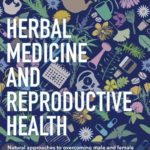
by Marie Reilly, 2021, Aeon Books, UK
I will admit that I am somewhat biased here, because I had the pleasure of reading this manuscript before it was published and in giving an endorsement to the book. This book is a practical manual for anyone with a special interest in holistic health and fertility. Written by a herbal practitioner with extensive clinical experience, the book explores the causes and reasons behind infertility in women and in men. It offers a wide range of strategies for supporting reproductive wellness towards successful pregnancies. With a comprehensive overview of hormones and neuroendocrine interdependence, as well as energetic patterns of disharmony, this book is an elegant melding of eastern and western approaches. With a wide ranging materia medica and detailed descriptions of how the herbs work, this book is going to be very useful for many people. I especially appreciate that Marie has explored male health as well as female, this is a refreshing change as there is precious little written about men’s health and natural medicine in general, or men’s health and herbs in particular. This book goes some way towards correcting that deficiency.
The Handbook of Constitutional and Energetic Herbal Medicine: The Lotus Within 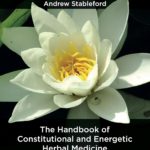
by Andrew Stableford, 2021, Aeon Books, UK
This fascinating book is really a sort of counterpoint to the book by Kerry Bone. Without getting engaged in the phytochemistry of the plants, this book describes how to assess energetic pattens in the body, and what symptoms and sets of symptoms to address. It considers using herbs to address psychological and psychosocial issues, assessing health through integration within the individual and using herbs for inducing harmony. With detailed materia medica and extensive case reviews, this book demonstrates practical applications of complex theoretical models of medicine. Tragically the author suddenly died shortly after the publication and this book is a sort of epitaph to his work.
The Humoral Herbal: A Practical Guide to the Western Energetic System
by Stephen Taylor, 2021, Aeon Books, UK 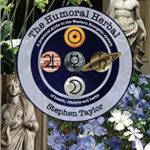
This book has been a real pleasure to go back to again and again through the year. With extremely clear descriptions of the energetic basis underlying western medicine and excellent diagrams demonstrating the interconnectivity of the elements: air, water, fire and earth. It also dives deep into diagnosis, imbalances of the four humours and how to assess this through tongue and pulse diagnosis. This book is very detailed and very practical. The second half of the book is a wonderful herbal study,; illustrated by very beautiful photographs of the plants, giving not only their constituents, actions and clinical applications, but also the emotional, humoral, and mythical correlations of each plant. Assigning them to the humours (melancholy, sanguine, choleric or phlegmatic) and also giving them the qualities of hot, dry, wet or cold, allows a corresponding clinical prescribing of considerable accuracy. This book articulates all the principles I use in my practice and describes a unique way of seeing patients and their diseases through a profoundly holistic and energetic lens. It is already a favourite for me.
Phyto Chemistry and Pharmacy for Practitioners of Botanical Medicine
by Eric Yarnell, 2021, Aeon Books, UK 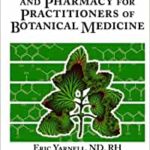
This is a technical and detailed guide to the chemistries of medicinal plants, their structure and function. The book discusses solubilities and the best ways of extracting each constituent, very practical information for anybody who is making their own herbal medicines, and it also gives safe dosing and contraindications for different constituents. This book does discuss some of the toxic herbs like belladonna and jimsonweed, and provides instructions on using them safely. There are also very useful tables giving directions for best ways to extract plants, including fresh or dried. This is a valuable reference book that won’t tell you what herb to use for which patient, but it will tell you how they’re working and what they’re doing.
